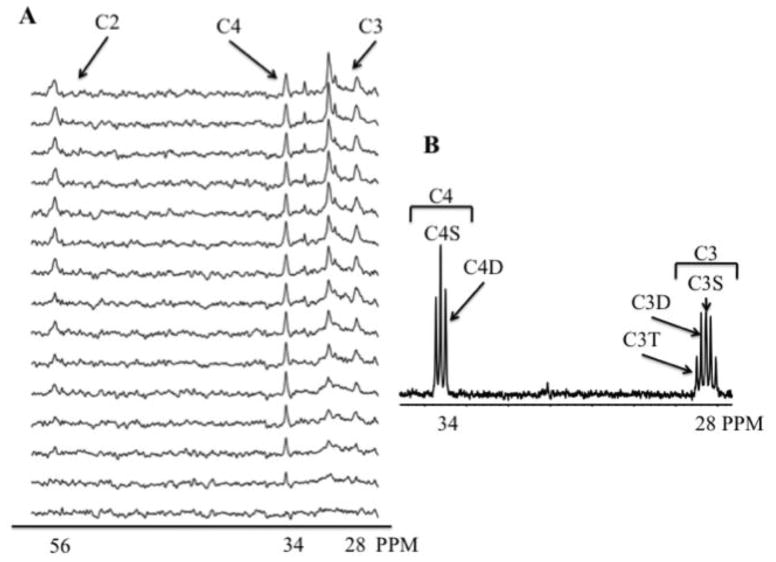Figure 1.
Representative spectra from a perfused db/db heart after 8 min ischemia followed by 10 minutes reperfusion. A. Dynamic-mode 13C spectra from isolated db/db heart perfused with 0.4 mM [4,6,8,10,12,14,16 – 13C7] palmitate + 10 mM unlabeled glucose. Spectra display progressive 13C enrichment of glutamate over 30 minutes. The signals from the 4-, 3-, and 2-carbons of glutamate produced by oxidation of 13C palmitate, at 34, 28, and 56 ppm respectively (C4, C3, and C2). C. 13C NMR spectrum of extract from db/db heart perfused with 13C palmitate + 10 mM unlabeled glucose. The resonance signals from the 4- and 3-carbons of glutamate at 34 and 28 ppm respectively (C4 and C3) are produced by oxidation of 13C palmitate and display multiplets from J13C-13C coupling due to glutamate isotopomer formation. Note the absence of 13C enriched glutamine at 32 ppm the spectrum, which displays enrichment at only the 1.1% natural abundance level that indicates no significant conversion of 13C glutamate to glutamine in the heart.

